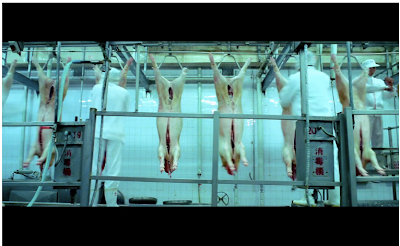Ambrosial
extremely pleasing to the senses, especially of taste or smell
comes from the Greek word for "immortality", ambrosia was the food of the Greek and Roman gods (nectar was their drink)
Gustatory
related to or associated with eating or the sense of taste
It's a late 17th century creation coined from gustare meaning taste. In the 20th century its no stranger to cooking magazines where it is paired with words like pleasure and delight.
Distantly related to gusto, more closely related to disgust.
Piquant
agreeably stimulating to the palate, especially: spicy
engagingly provocative; also: having a lively arch charm
Postprandial
occurring after a meal
Although the Latin prandium actually means "late breakfast," postprandial now refers to activities after a meal, especially those that aid digestion.
Borborygmus
intenstinal rumbling caused by moving gas
It is an onomatopoeic or imitative—it sounds like what it describes.
About the Word:
Ambrosia comes from the Greek word for "immortality"; ambrosia was the food of the Greek and Roman gods (nectar was their drink).Read more at http://www.merriam-webster.com/top-ten-lists/top-10-food-words-worth-savoring/ambrosial.html#mRCDf7cr7JsAFqLT.99
1 : agreeably stimulating to the palate; especially: spicy
2 : engagingly provocative; also : having a lively arch charm
Read more at http://www.merriam-webster.com/top-ten-lists/top-10-food-words-worth-savoring/piquant.html#IdDkKz6IDEXpSV3q.99
2 : engagingly provocative; also : having a lively arch charm
Read more at http://www.merriam-webster.com/top-ten-lists/top-10-food-words-worth-savoring/piquant.html#IdDkKz6IDEXpSV3q.99
Definition:
1 : agreeably stimulating to the palate; especially: spicy2 : engagingly provocative; also : having a lively arch charm
Read more at http://www.merriam-webster.com/top-ten-lists/top-10-food-words-worth-savoring/piquant.html#IdDkKz6IDEXpSV3q.99
























































